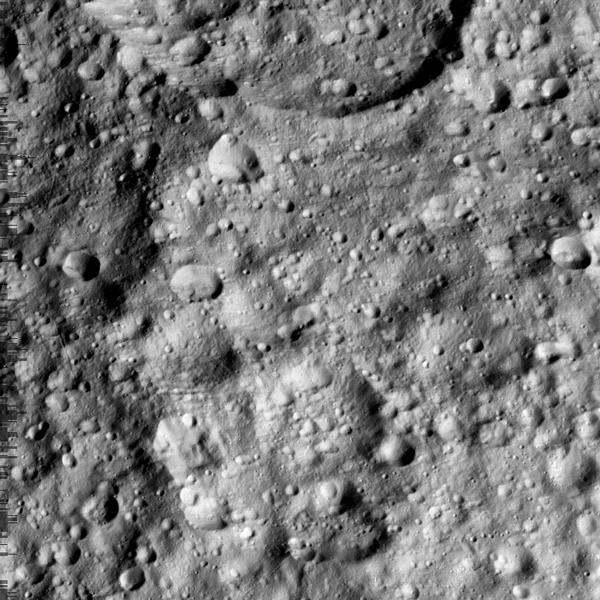
On Nov. 11, 2015, NASA’s Cassini spacecraft passed relatively closely by Saturn’s moon Tethys, one of the ringed planet’s larger icy satellites. The animation above was made from 29 raw images acquired with Cassini’s narrow-angle camera as it passed by; you can see part of the incredibly cratered and ancient surface of this 662 mile (1,065 km) wide moon. Talk about flyover country!
Tethys (pronounced TEE-this), along with its larger sisters Dione and Rhea, is one of the most heavily-cratered worlds in the Solar System, if just slightly less so than the other two. With a density .97 times that of liquid water Tethys is composed almost entirely of water ice with a small percentage of rock.

This particular pass did not appear to be part of a targeted flyby of Tethys (see a list of those here) so it may have just been a chance to get a look at the moon’s surface as Cassini is on its way to meet up with Titan on Nov. 13 for T-114.
Note: these images have not been validated or calibrated by NASA or the SSI imaging team. As with all raw images, validated/calibrated versions will be archived with the NASA Planetary Data System in 2016.
Learn more about Saturn, its moons, and the Cassini mission here.
Very interesting and informative. I think that is so cool.
LikeLike
very good your information
LikeLike
i very like a moon
LikeLike